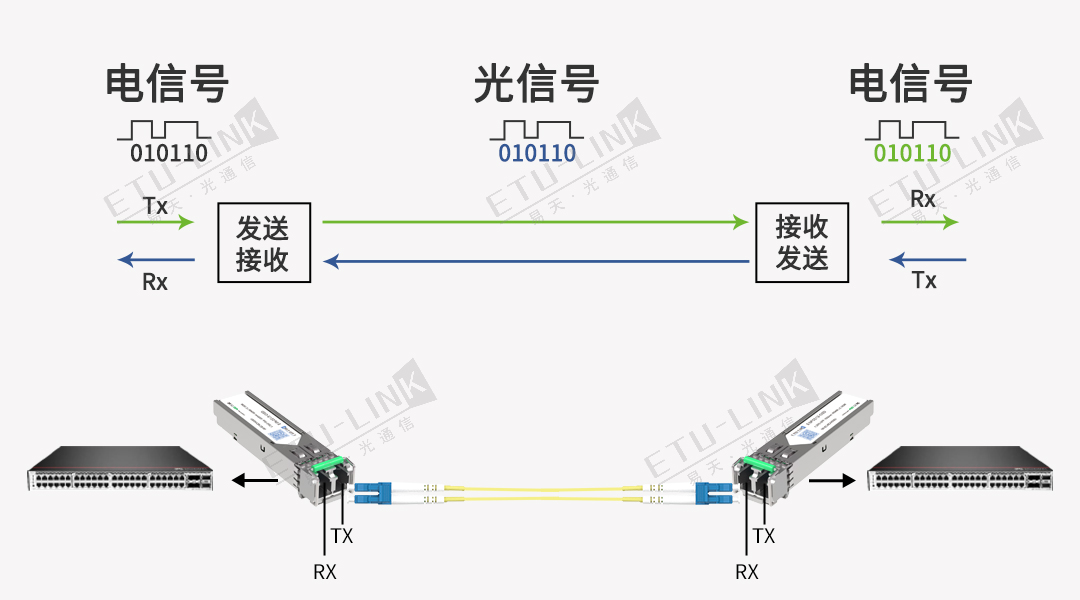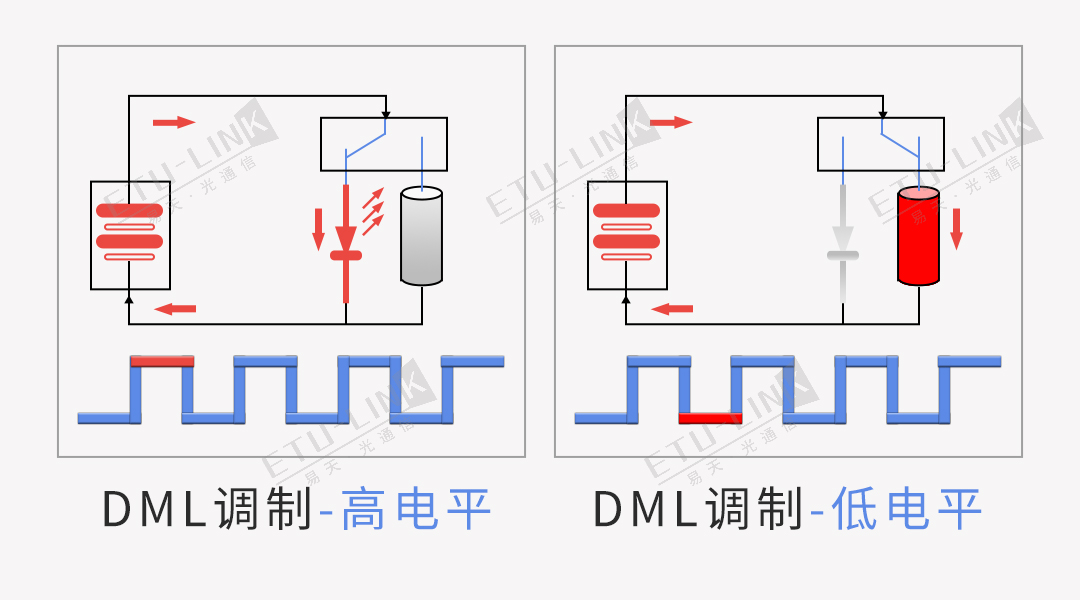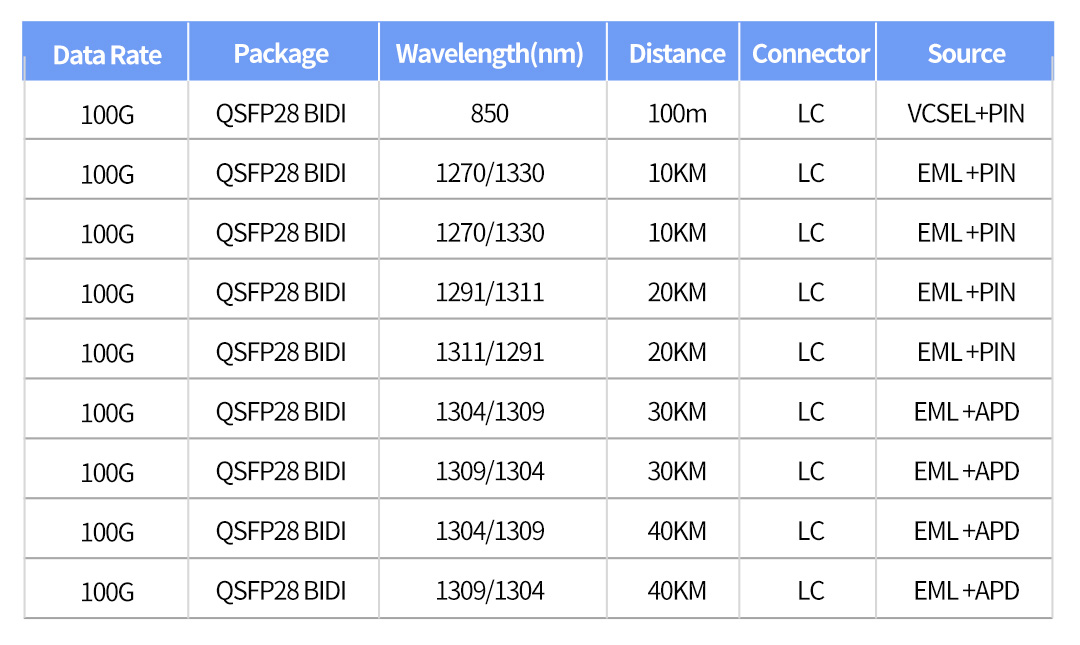
Introducción a la modulación DML y EML para láseres de módulos ópticos
Antecedentes y principio básico del módulo óptico
En la introducción de los parámetros del producto de los módulos ópticos, a menudo mencionamos el modo de modulación como un indicador clave, DML (láser de modulación directa) y EML (láser de modulación externa) son dos tecnologías de modulación principales para módulos ópticos. La función básica de un módulo óptico es lograr la conversión optoelectrónica, es decir, la conversión mutua de señales eléctricas y ópticas, para transmitir datos en una fibra óptica.

Tecnología de modulación DML
El principio básico de la tecnología de modulación DML es controlar directamente la corriente a través del láser para emitir luz de diferentes intensidades. Cuando la señal moduladora es alta, la corriente moduladora fluye a través del diodo láser (LD) y el láser emite luz normalmente, mientras que cuando la señal moduladora es baja, la corriente moduladora no fluye a través del LD y el láser no emite luz. La modulación DML es simple y directa, pero el láser siempre está en un estado inestable durante el proceso de modulación, lo que puede hacer que la calidad de la señal de salida se vea afectada por el efecto no lineal.

Tecnología de modulación EML
A diferencia de DML, la técnica de modulación EML pasa una corriente constante a través del láser, mientras que un modulador externo varía la intensidad de la señal óptica. Cuando la señal de modulación es alta, el absorbente eléctrico no absorbe la luz emitida por el LD y la mayor parte de la luz pasa a través del absorbente eléctrico; mientras que cuando la señal de modulación es baja, el absorbente eléctrico absorbe la mayor parte de la luz y la mayor parte de la luz no puede pasar a través del absorbente eléctrico. Esta modulación permite que el láser mantenga un estado de emisión de luz estable, mejorando así la calidad de la señal de salida. La tecnología de modulación EML se utiliza generalmente para velocidades de 10 Gbps o más, largas distancias de 40 km y superiores del módulo óptico.

Selección de tecnología de modulación DML y EML
La principal diferencia entre DML y EML radica en cómo responden a las necesidades específicas de los clientes: DML demuestra una mayor competitividad de precios, mientras que EML es más adecuado para escenarios de aplicaciones que requieren márgenes más altos. En la línea de productos de módulos ópticos de ETU-LINK, ofrecemos una selección de módulos ópticos basados en tecnologías de modulación DML y EML según las diversas necesidades y escenarios de aplicación de los clientes.
Serie ETU-LINK 100G QSFP28:

Productos de la serie ETU-LINK 100G BIDI:

En resumen, DML y EML, como dos tecnologías de modulación importantes para módulos ópticos, desempeñan un papel importante en sus respectivos escenarios de aplicación. ETU-LINK continuará dedicándose a la investigación y el desarrollo y la innovación de la tecnología de módulos ópticos y brindará a los clientes más productos de módulos ópticos eficientes y de alta calidad.
Categorías
nuevo blog
Etiquetas
© Derechos de autor: 2026 ETU-Link Technology CO ., LTD Reservados todos los derechos.

Soporta red IPv6